Brian Brenner, P.E., F.ASCE, is a professor of the practice at Tufts University and a principal engineer with Tighe & Bond, in Westwood, Massachusetts. His collections of essays, Don’t Throw This Away!, Bridginess, and Too Much Information, were published by ASCE Press and are available in the ASCE Library.
In his new Civil Engineering Source series, More Water Under the Bridge, Brenner shares some thoughts each month about life as a civil engineer, considering bridge engineering from a unique, often comical point of view.
I went Google surfing for bridges in Paraguay. I focused on eastern Paraguay, at the confluence of the Iguazu and Parana rivers. This seemed like a good spot to find some good bridges. The rivers’ confluence is at the border intersections of three countries: Argentina, Brazil, and Paraguay. The Parana River flows south at Paraguay’s eastern border. Argentina and Brazil are separated by the Iguazu River, which flows west and empties into the Parana River.
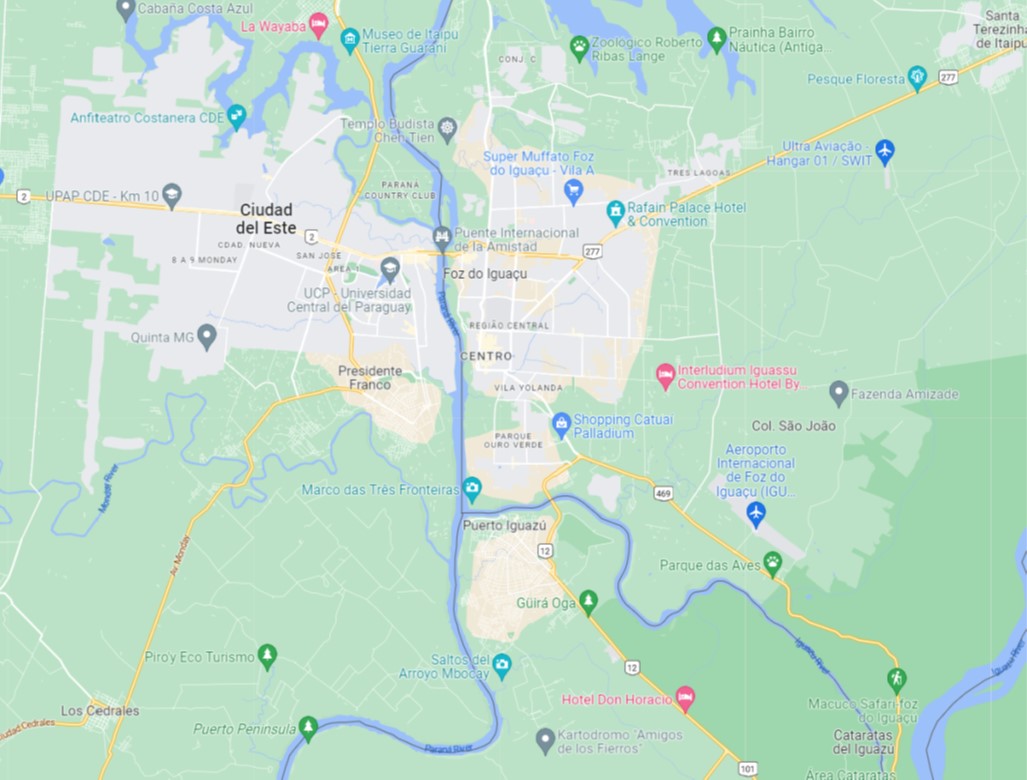
The area is probably best known for the amazing Iguazu Falls. The Iguazu River drops over 600 feet in a series of cascades about 30 miles to the east.
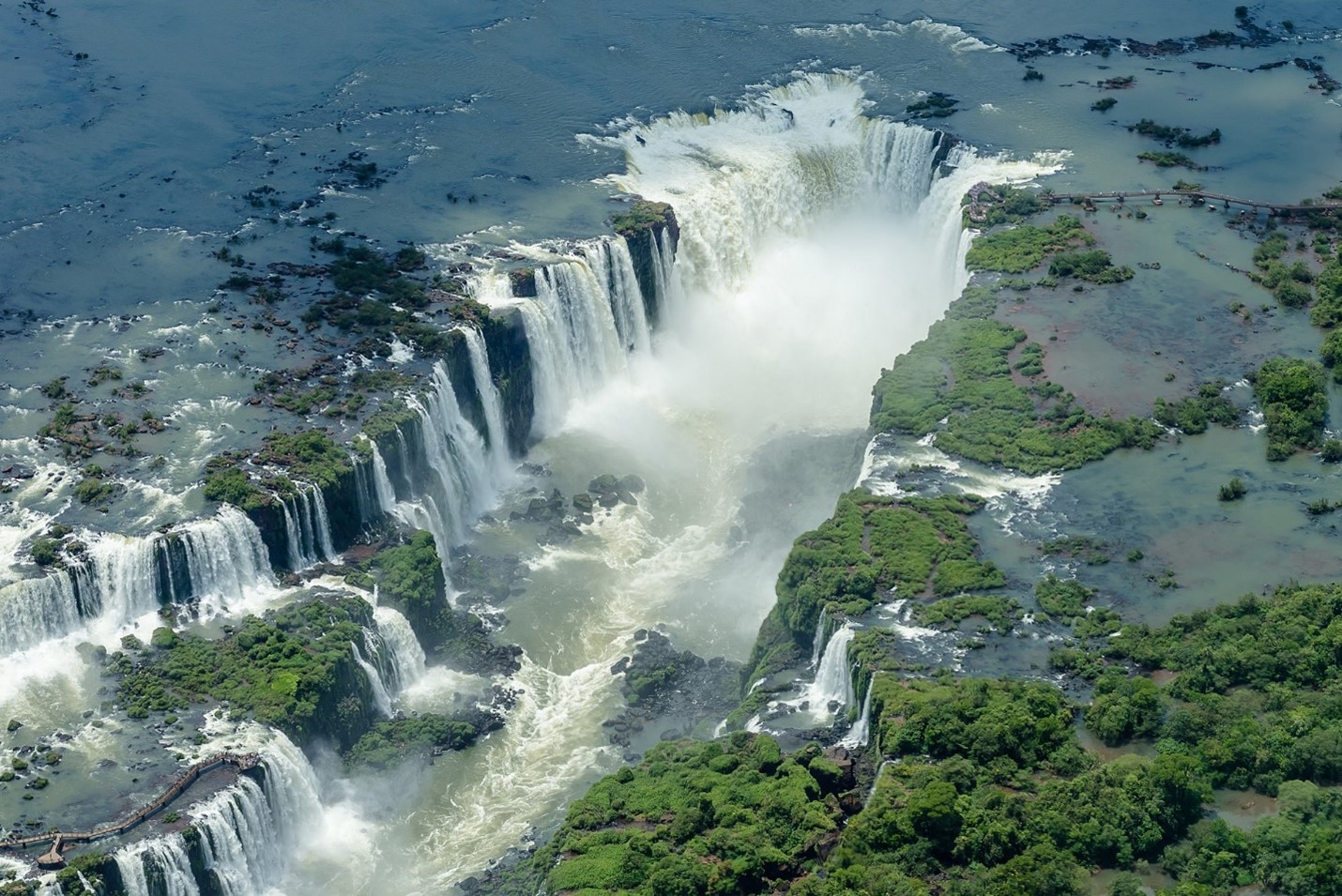 Enaldo Valadares
Enaldo Valadares
Some writers consider Iguazu Falls to be one of the three greatest waterfalls on Earth, the other two being Niagara Falls between the U.S. and Canada, and Victoria Falls at the border of Zambia and Zimbabwe. For sheer waterfall spectacle, Iguazu Falls probably tops the other two. But unfortunately, Iguazu Falls is sorely lacking in the bridge department. While both Niagara Falls and Victoria Falls have graceful arch bridges spanning immediately downstream, Iguazu Falls is missing an arch bridge.
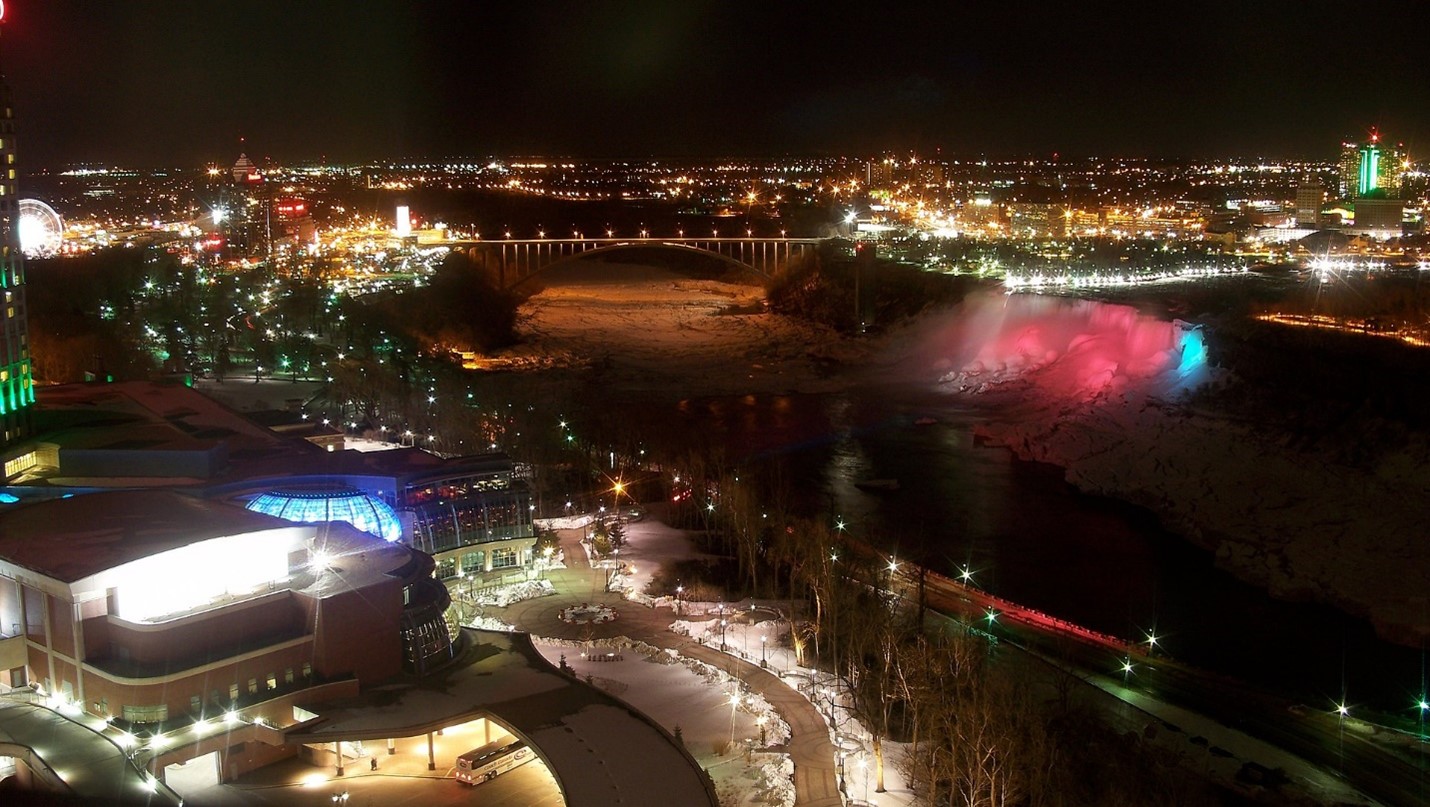 Ahodges7
Ahodges7
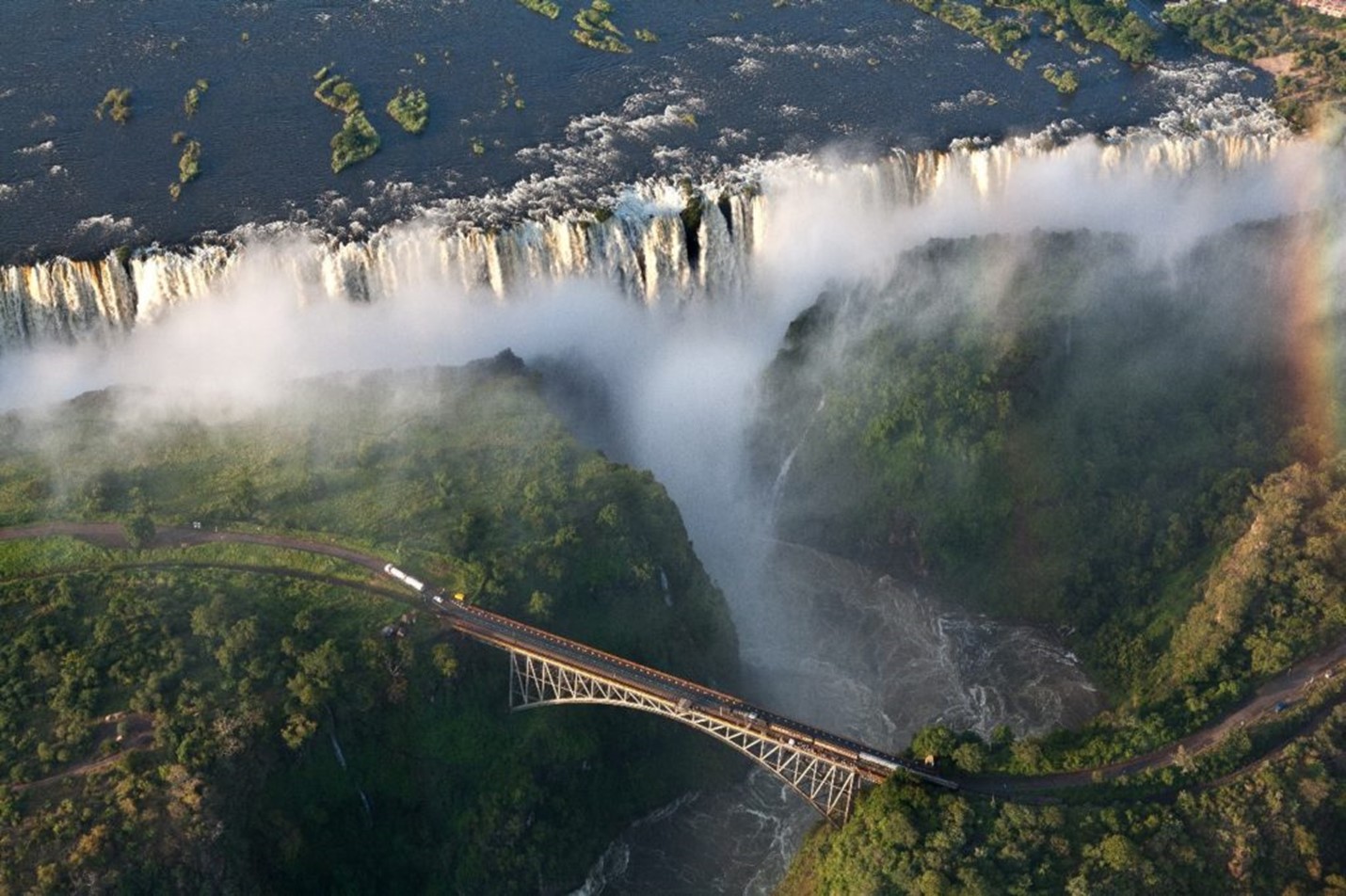
But Iguazu Falls is still impressive, even though it doesn’t have an arch bridge.
There is a sleek bridge many miles downstream from the falls. It is the Ponte Tancredo Neves, a posttensioned concrete box beam bridge with a main span of 720 feet. It was constructed by the balanced cantilever method and completed in 1985.
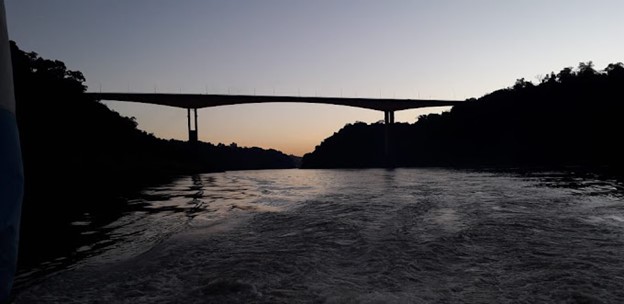 Frederik Pardal
Frederik Pardal
Some Google views suggested the presence of great bridges around the confluence of the Iguazu and Parana Rivers. It looked like I came to the right place to bridge-surf. Immediately north is an impressive, newly constructed cable-stayed bridge. This international bridge, Ponte de Integracao, connects Brazil and Paraguay. It is so recently constructed that it does not yet appear on Google Maps but does show up (under construction) in satellite views. Construction photos on Google show the span being built using the cantilever method.
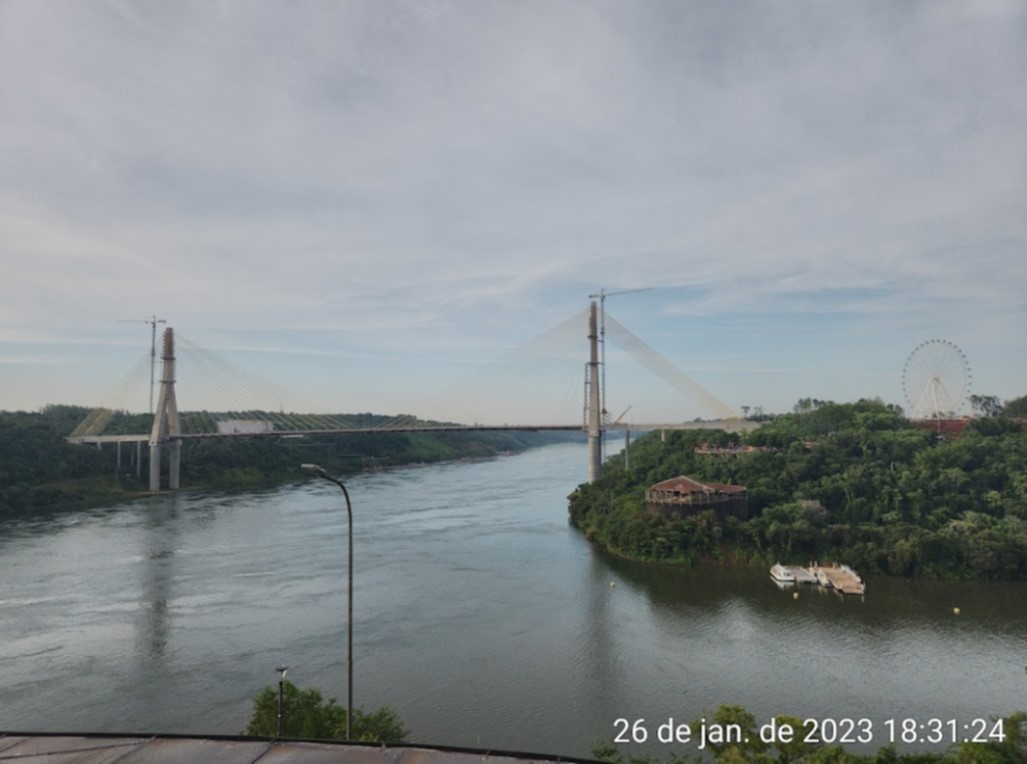
In this photo taken at the end of January 2023, you can see that the main span is complete. The confluence of the rivers is in the foreground of the photo, with the camera positioned on the Argentine side of the river junction. Fortunately, someone built a large Ferris wheel on the Brazil shore, so bridge tourists can more easily view the bridge. I assume that the Ferris wheel is for bridge tourists, although others may use it as well.
The International Friendship Bridge (Puente Internacional de la Amistad) is the second bridge crossing the Parana River in the area. It is an impressive concrete deck arch with a main span of 909 feet, completed in 1965 and about 6 miles north of the new Ponte de Integracao.
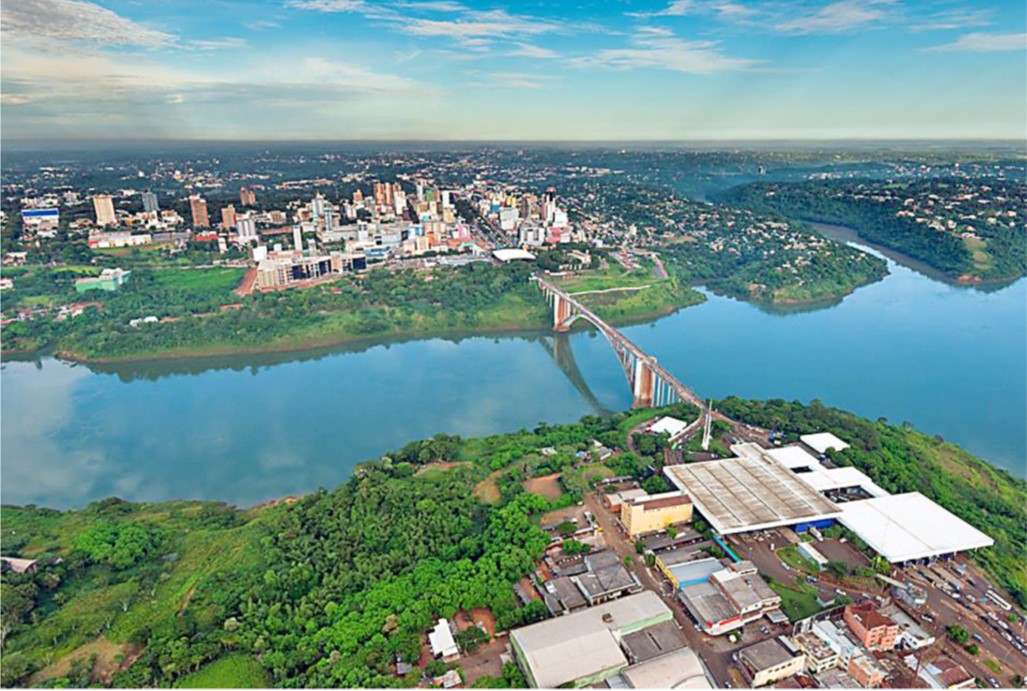 David Gonalez
David Gonalez
The bridge had become clogged with traffic since it provides the only direct access between Brazil and Paraguay’s second largest city, Ciudad Del Este. I Google-drove from Brazil to Paraguay across the bridge and the traffic was pretty bad. I got stuck for a while – I think customs at the international borders were gumming things up.
Before starting my trip, I didn’t know a lot about Paraguay other than it was in South America and its capital is Asunción. The city of Ciudad Del Este has a metropolitan population of about 800,000 people with some freeways and potential haunts for bridges. The capital city is about 200 miles to the west. I figured I would Google-drive down Paraguay Route 2, across Ciudad Del Este and the countryside, to see what I could find.
At the prominent junction of Route 2 and Puente Caravalcanti in the city, I crossed an unusual highway bridge. It starts off not being that unusual. It features a series of viaducts for the main lanes and connector ramp roads for Route 2 crossing over Puente Caravalcanti below. The bridge superstructure consists of standard precast pretensioned beams. What is unusual is the addition of architectural structures on the sides. Each side has what appears to be partial cable-stayed supports. The cables are attached to the parapets on the sides of each outer span.
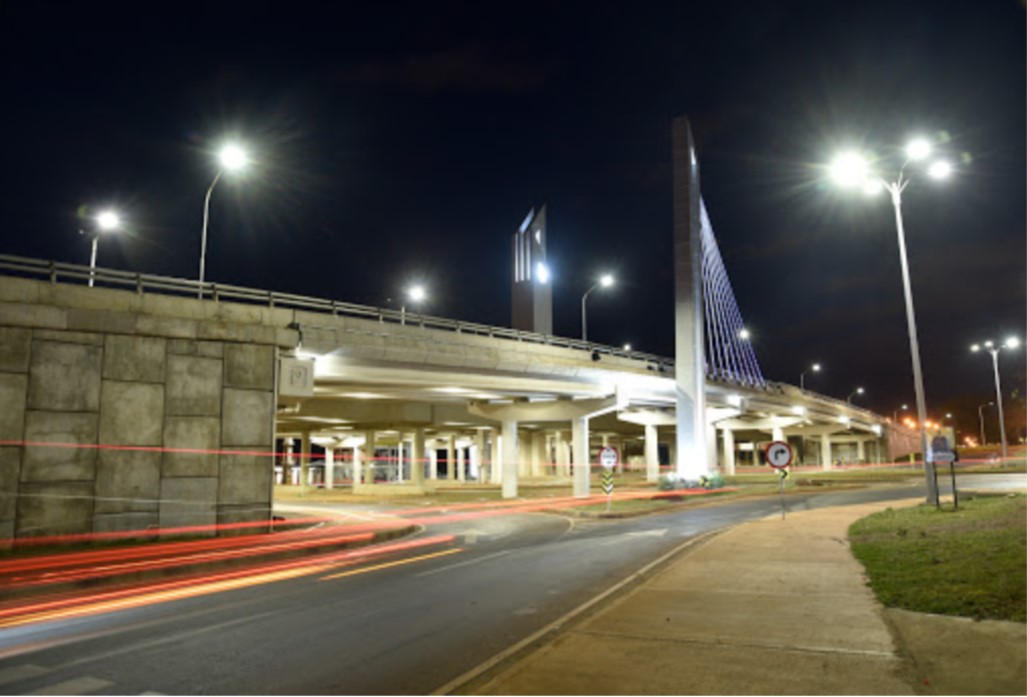
The designers also added a prominent tower in the middle of the group of bridges that is lit up at night. The cables don’t seem to support anything, but they provide a hint of a cable-stayed bridge, so it is a sculptural impression of what a full cable-stayed bridge might be. The intention, I suspect, was to gussy up the intersection. In bridge terms, the crossing did not require anything special beyond a usual highway beam bridge. But the architects designed additions using bridge forms to create the impression of a type of bridge that wasn’t really there.
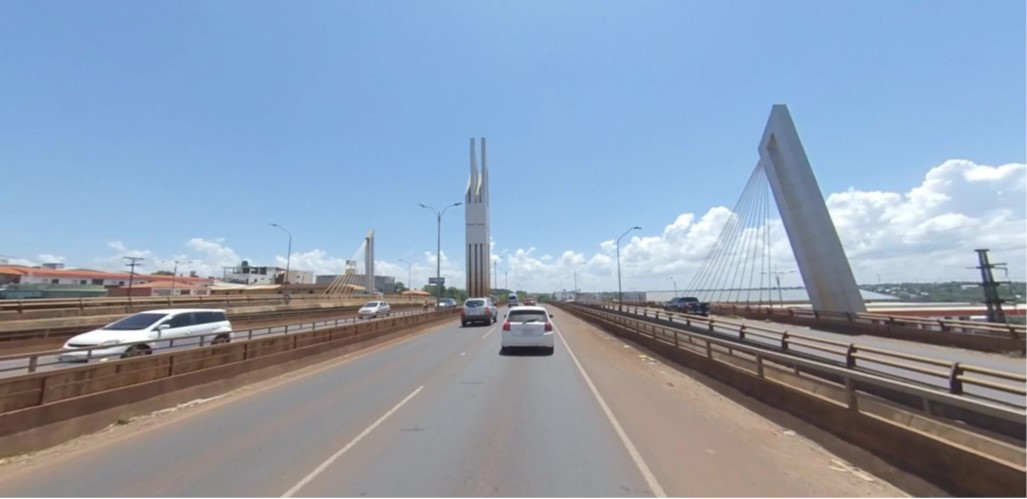
This, by the way, is a smaller version of an approach that is popping up all over the world, not just in Paraguay. There are prominent sculptural bridges in Dallas, for example, and a large cable-supported bridge is under construction in downtown Miami, replacing more standard highway viaducts. Applying bridge forms for decoration can help to visually improve the public realm. But it is a form of sculpture, and often not a form of bridge.
At this point, I had been Google traveling for a few hours and I was starting to get tired. It is always a good idea to avoid driving when you are drowsy. I found a place further west to pull over on the side of the road and have a little shuteye. That way I could Google-surf later in Asunción, which was still many miles and clicks away.
Read previous entries in the More Water Under the Bridge series.



